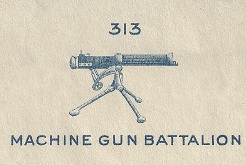Thomas Bernard Roche
Questioning one’s faith while enemy shells fall upon a man at the war front was undoubtedly a shared experience. For the Doughboys, the chaplain was typically the one man in the unit who could be looked upon as that unwavering pillar of spiritual strength to help guide the men through some of the worst days on earth.
Lieutenant Minard Hamilton of Company C wrote on August 18, 1918, “I can’t say I’m very religious, and I never pray, but by gum, I was nearer prayer yesterday than I’ve been in some time. When your tin hat feels like a peanut shell and you are trying to make yourself as flat as a shingle, and you know darn well that the old shell has your name and present address on it, you will either pray or curse. I did both, and they seemed about equally effectual.”
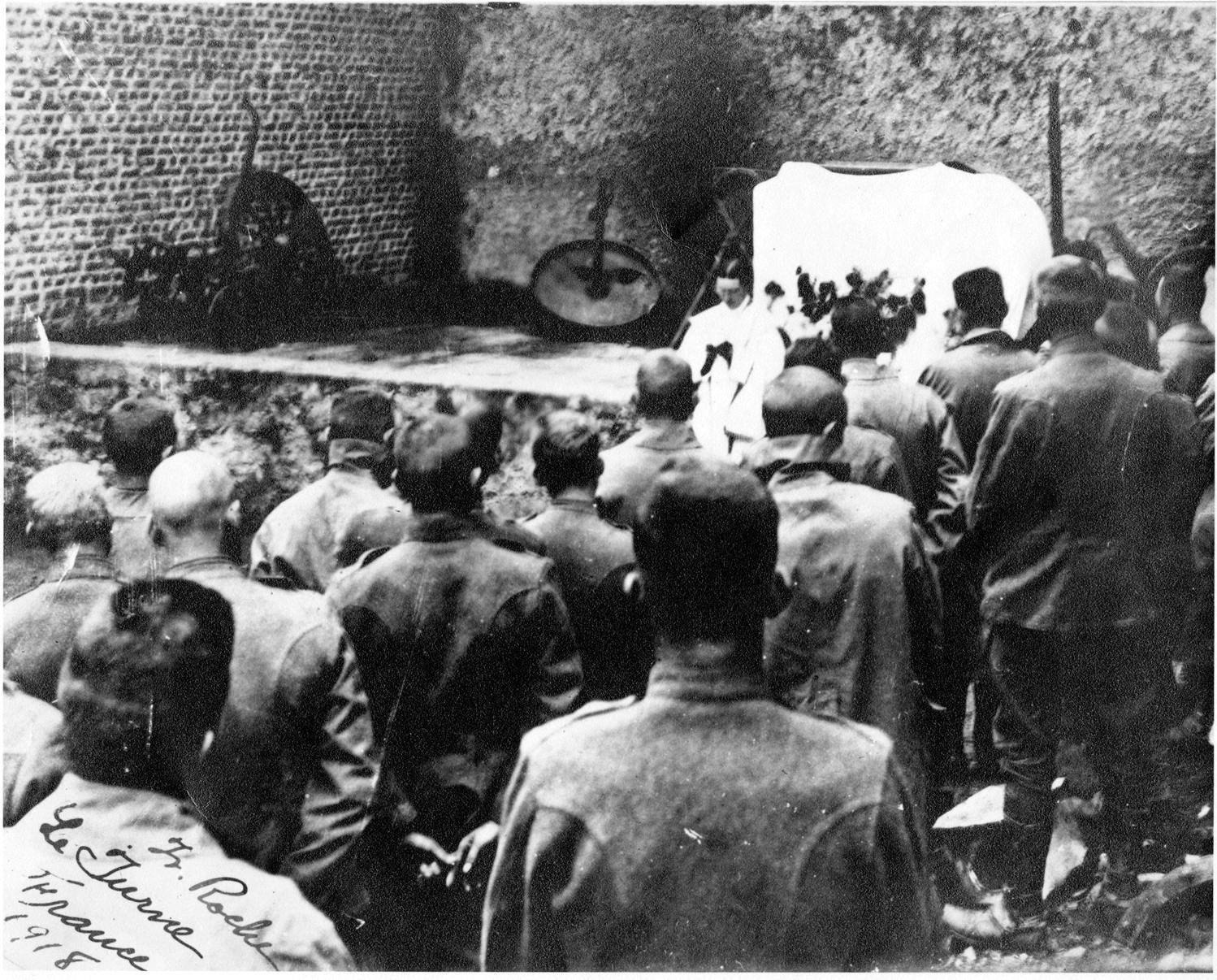
Even for those men who did not practice a particular religious belief, perhaps the reassuring words from a “man of the cloth,” or the sound of a familiar prayer, was enough to bring some sense of calm to the harshest of moments. For the men of the 313th Machine Gun Battalion, that man was Army Chaplain, First Lieutenant Thomas B. Roche, a 33-year-old catholic priest from Rochester, New York.
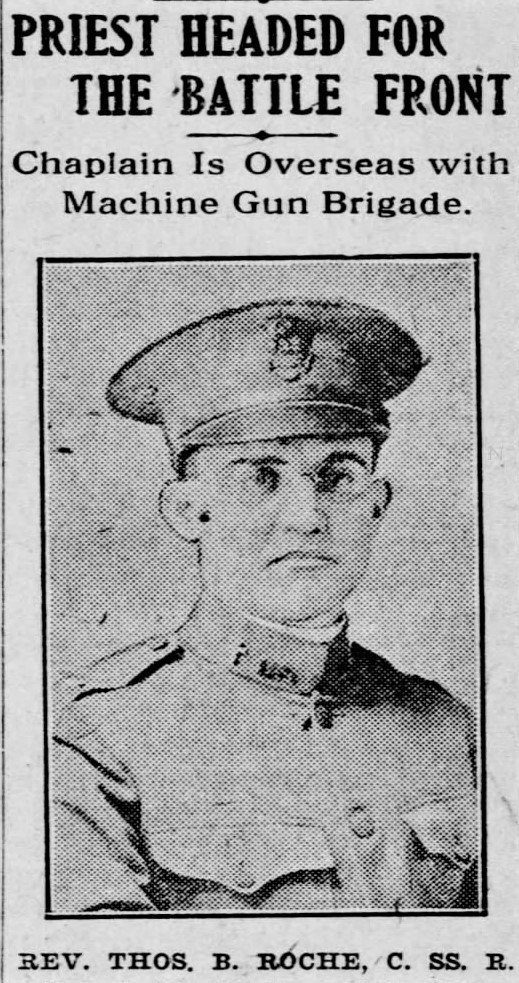 Father Roche was ordained as a priest in the Redemptorists order in 1911. Just as the First War was starting up in Europe, Roche was studying in Rome and was present for the September 1914, coronation of Pope Benedict XV. In 1915, he returned to the United States and became a Lector of Philosophy. In April 1918, he left his teaching position at St. Mary’s College in North East, Pennsylvania and entered the National Army as a Chaplain at Camp Lee, Virginia. He set sail for France with the 313th Machine Gun Battalion on May 24, 1918, with less than two months of military preparation.
Father Roche was ordained as a priest in the Redemptorists order in 1911. Just as the First War was starting up in Europe, Roche was studying in Rome and was present for the September 1914, coronation of Pope Benedict XV. In 1915, he returned to the United States and became a Lector of Philosophy. In April 1918, he left his teaching position at St. Mary’s College in North East, Pennsylvania and entered the National Army as a Chaplain at Camp Lee, Virginia. He set sail for France with the 313th Machine Gun Battalion on May 24, 1918, with less than two months of military preparation.
The one photo shown here is that of Father Roche conducting a worship service for the men of the 313th Machine Gun Battalion while resting in Le Turne, France. This was in the northern region of the country when the battalion was attached to the British Expeditionary Forces around Picardy. In addition to conducting worship services and other duties as an Army Chaplain, Father Roche would have assisted the medical detachment in comforting the wounded, or he would have performed the ritual of “last rites” for the men suffering from severe wounds or those who were killed. His name appears at the bottom of many of the Battalion “Grave Location Blanks” used to document the coordinates on the battlefield when a temporary burial site was dug.
After the war, Father Roche returned to the United States and performed mission work at St. Alphonsus Church in the Lower East Side of New York City for about ten years. He was then appointed to Pittsburgh where he spent the remaindered of his career. During the Second War, he served as a Chaplain for POWs held in camps around Newport News, Virginia. He held a long tenure as State Chaplain for the Pennsylvania American Legion. Father Roche was so beloved by the men of his battalion that a testimonial dinner was given in his honor before a standing-room crowd in the Battalion’s Peach Street social club in Erie, PA.
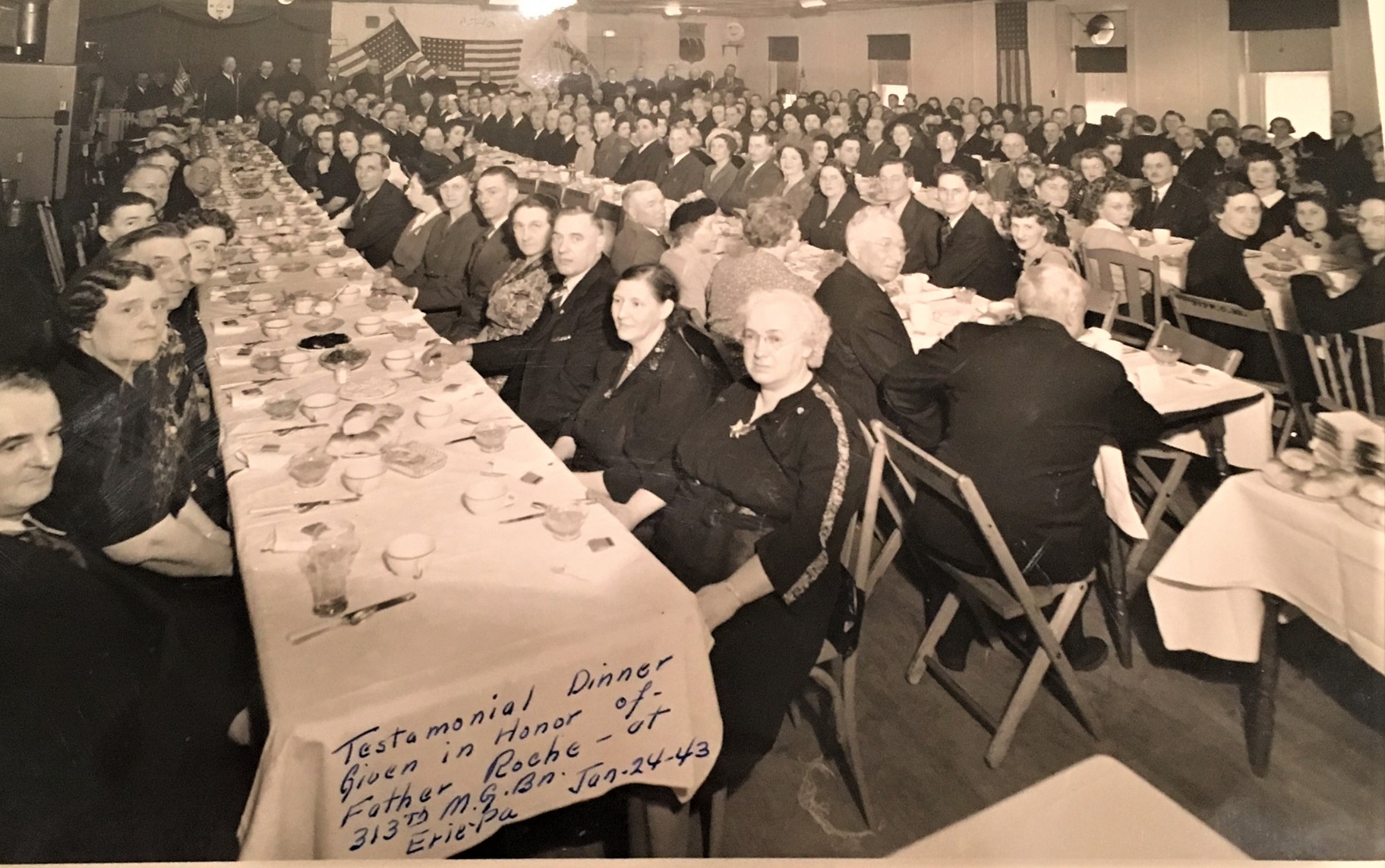
On July 6, 1947, while attending a Pittsburgh Pirates baseball game at Forbes Field, Father Roche suffered a cerebral hemorrhage and died at Mercy Hospital on July 7th at the age of 62 years old. Father Roche was said to be so cherished by his battalion comrades that one story comes from the family of Wagoneer John Fred Brei, a member of Headquarters Company who lived in Erie, PA.

John Fred Brei, Jr (1891-1947)
Brei went by the nickname "Peg" and was a key contributor to the 313th Machine Gun Battalion social club, helping with the paperwork to obtain the Pennsylvania State Charter. In 1947, Brei had been seeing a local doctor in Erie for a cardiac health issue. On the day that he received word of Father Roche's death, one of Brei's former battalion members called Brei to ask if he was planning to come down to Pittsburgh to attend Roche's funeral. Brei's apparent response was, “If I did, I’d have to crawl in the casket with him.” Later that evening, Brei went to his room to lay down and suffered a fatal heart attack, passing away on July 8 at the age of 56 years old. Sadly, battalion members would have to attend two funerals that week. John Fred Brei, Jr was buried with military honors in Calvary Cemetery, Erie, PA, and a Solemn Requiem Mass was celebrated for Father Roche at St. Philomena’s Church, followed by a burial with military honors at the Calvary Cemetery, Pittsburgh, PA.

Thomas Bernard Roche (1885-1947)
The Rev. Thomas B. Roche C.Ss.R. wearing his uniform for the Trees-Carlisle American Legion Post No. 166, Pittsburgh, PA (Photo credit: Redemptorist Archives, St. Peter the Apostle Church, Philadelphia). Archivist Patrick Hayes Ph.D. also shared an unsourced note found in the file for Rev. Roche that merely indicates that he was shocked at the "horrible" conditions of enemy trenches. No other data was given on the context for this sentiment, but it is interesting that someone believed this information to be significant enough to save that detail for future reference, lest we forget.
Rev. Roche's obituary said that he was "an indefatigable worker" who took up the work of spreading the devotion of St. Gerard Majella, C.Ss.R. (1726–1755) who was also a Redemptorists. Rev. Roche produced pamphlets on St. Gerard, a number of Novena bulletins, and a best-selling pamphlet published on the Ten Commandments (photo below). The first church to be dedicated to St. Gerard was built in Wellington, New Zealand, in 1908. While not necessarily related, it may be of interest to know that the 313th Machine Gun Battalion received their "baptism of fire" when attached with men from a New Zealand machine-gun unit about the time the 1918 photo above was taken.
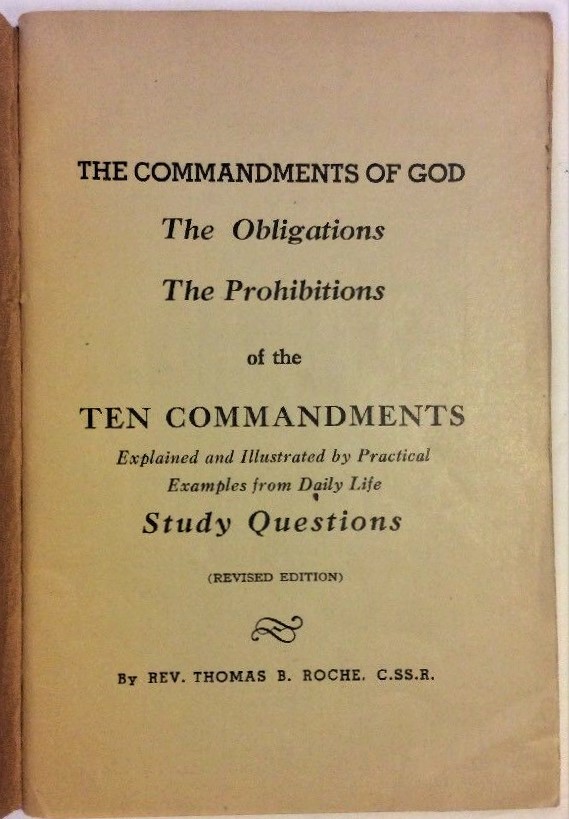
Additional photo credits: The 1918 France photo and 1943 Erie dinner photo courtesy of Marilyn Holland and Dottie Marsh. Newspaper clipping from Democrat and Chronicle, Rochester, New York, July 3, 1918.
